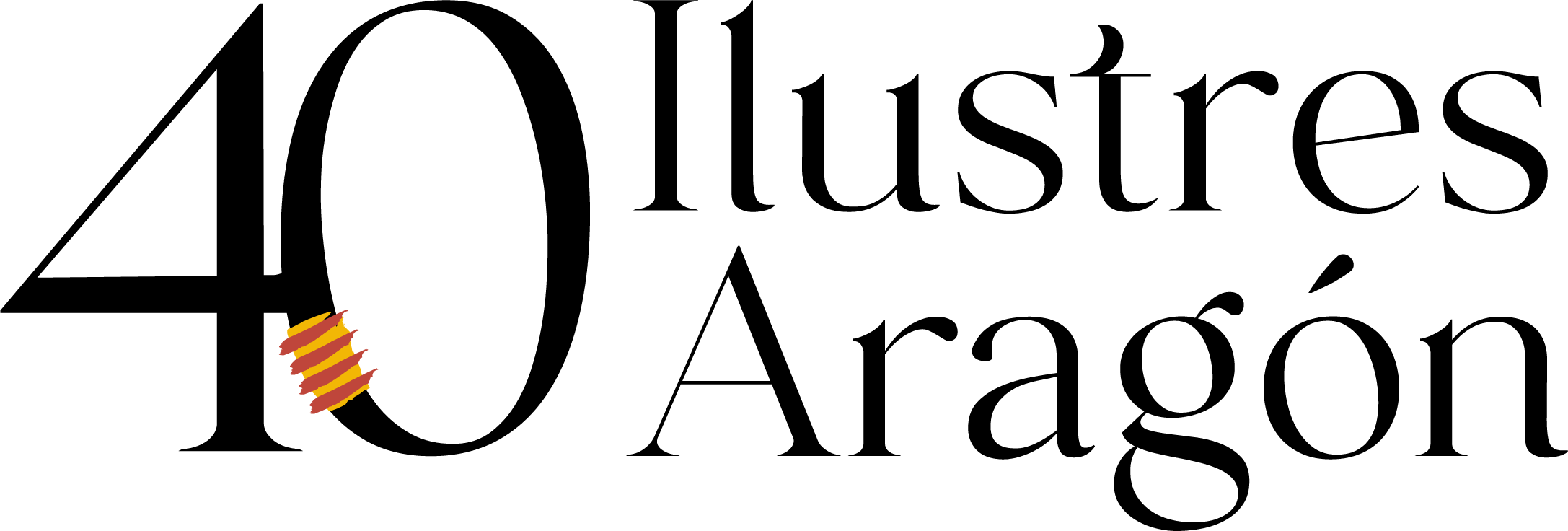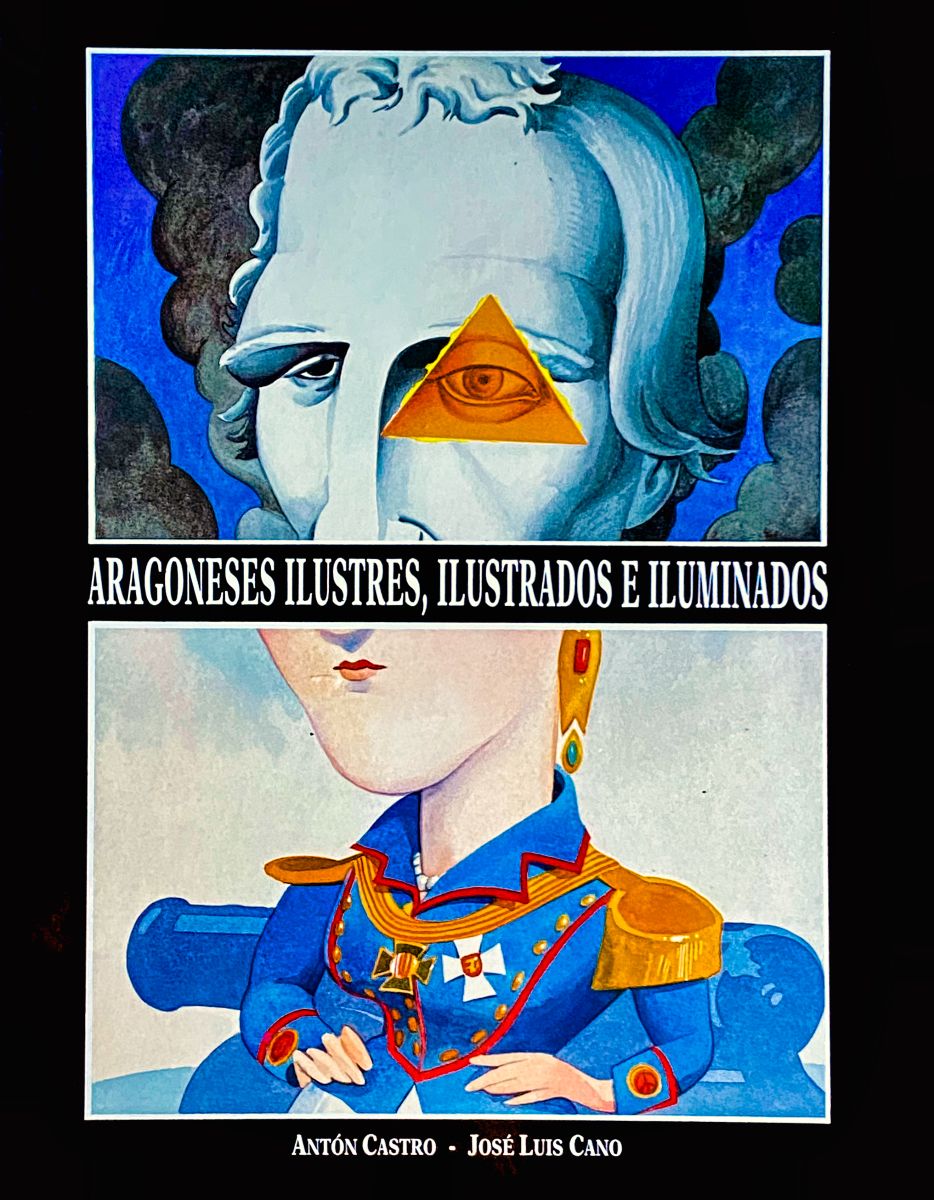Pablo Serrano
Humanity in its deepest sense
Crivillén, 1908 – Madrid, 1985
The son of a veterinary surgeon, Pablo Serrano Aguilar began his training in sculpture in the Saragossa workshop of José Bueno and completed his training in carving and modelling at the Salesian Schools of Sarriá in Barcelona. With his academic training and twenty-one years of age, he went to South America. He first settled in Argentina and, from 1935, in Montevideo. In the Uruguayan capital he enjoyed splendid professional recognition. He received many commissions for public works in the Southern Cone, but also in Mexico and Puerto Rico, where he was outstanding for religious imagery and monumental pieces in an academic style from which he evolved towards more expressionist and innovative formulas. Influenced by the artists Lucio Fontana and Joaquín Torres-García, he approached the European avant-garde, cubism and abstraction.
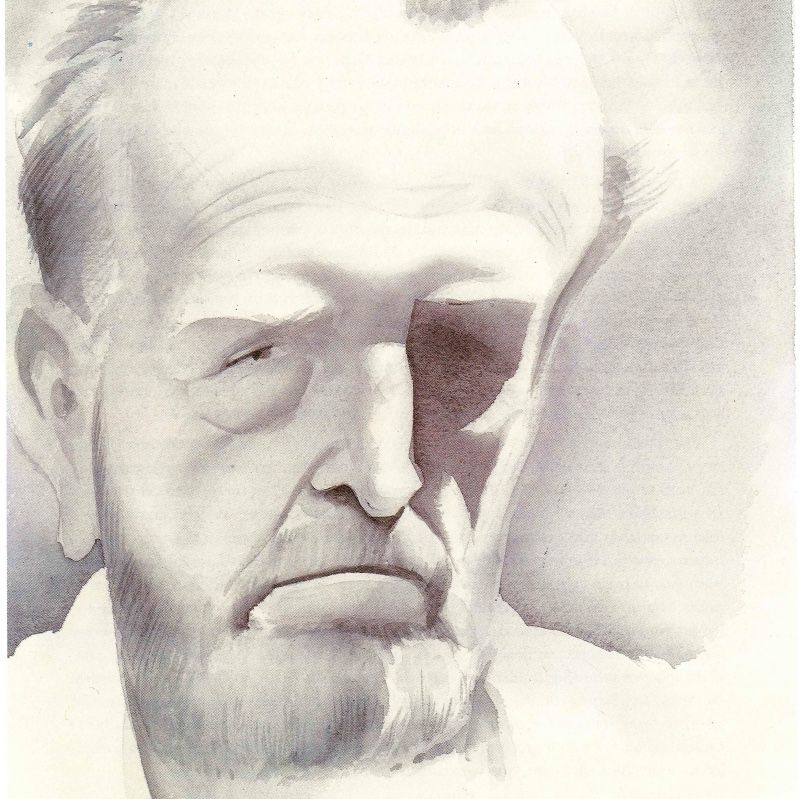
Life
When he decided to return to Spain, Serrano had earned a reputation as a more than solvent sculptor: three times winner of the first prize at the Salón de Bellas Artes in Montevideo, in that city he had joined the Paul Cézanne renovation group, and had triumphed with his series Los toros (influenced by Brancusi). That same year, 1955, he won the first prizes at the Montevideo Biennial (which gave him access to a scholarship for training abroad) and at the Hispano-American Biennial in Barcelona. After travelling around Europe and studying in Paris the work of the great Julio González (who would greatly influence him in his series Ritmos en el espacio), he settled in Madrid in 1957 with his wife, the Alicante painter Juana Francés.
That same year he founded the El Paso Group with Juana, with the painters Antonio Saura, Manolo Millares, Rafael Canogar and Luis Feito and the sculptor Martín Chirino. El Paso marked the entry of abstraction into Spain, reviving a sad artistic panorama through the avant-garde that had been sidelined by the war and the dictatorship. Its manifesto stated: “We believe that our art will not be valid as long as it does not contain a restlessness that coincides with the signs of the times, making passionate contact with the most innovative artistic currents. We are moving towards a revolutionary plastic art – in which our dramatic tradition and our direct expression are present – that responds historically to a universal activity”.
Work
In his series Ordenación del caos, giving weightlessness and expressiveness to a pile of iron, sheet metal, nails, rubble… Serrano was faithful to these principles, but he left the group for generational reasons (he was twenty years older than the young people of El Paso) and to go his own way: He exhibited his portraits (rather expressionist and metaphysical interpretations) of figures such as Goya, Machado or Picasso, reinvented the forging tradition of his admired Julio González in Hierros encontrados y soldados, focused on the representation of emptiness and silence based on the absence of volume (the steel filaments in Ritmos en el espacio), and reflected destruction and rebirth through fire in the pieces of Quema del objeto (Burning of the Object).

Acknowledged
He exhibited regularly in Madrid, but also in Paris, Charleroi, Milan, Berlin, New York, London and Rome. In the 1960s his fame grew. The cosmic and welcoming idea conveyed by his series Bóvedas para el hombre (which he would continue in his Hombres-bóveda) through bronze in various modulations and textures… triumphed at the 1962 Venice Biennale. Two years later, he used art to counteract the official propaganda of the Franco regime and its “25 years of peace” through his fajaditos (representations of gagged and bound beings). At the Guggenheim in New York he showed his series Men with Doors (1967) while his fame grew and monumental commissions and exhibitions followed one after the other all over the world: cities where he was already well-known were joined by Antwerp, Zurich, Lisbon… and the Hermitage in Leningrad (now St Petersburg), which in 1982 opened its doors for the first time to a Spanish artist for a solo exhibition. In the same year, he received the Prince of Asturias Award for the Arts.
Serrano’s production, a tireless worker, moved towards the figurative in his expressionist portraits, did not neglect the monumental, and in his last years gave way to new series full of meaning: the Unities and Bread reflect the thoughts of the artist of peasant origin for whom, in a certain return to those origins, he said that “the farmer and the baker are the first sculptors in the world”. In the autumn of 1985, the Guggenheim in New York showed his series Divertimentos con Picasso, la guitarra y el cubismo. Shortly afterwards, the man who, among those of his time, best knew how to explore the sculptural void, died in Madrid.
Recognised in his homeland (where he produced many works), he was awarded an honorary doctorate by the University of Saragossa and the Government of Aragon posthumously awarded him the Juan de Lanuza Medal in 1986.
References
- Antón Castro (1993): “Pablo Serrano, el hombre y sus brasas”, en Aragoneses ilustres, ilustrados e iluminados (224-229). Zaragoza, Gobierno de Aragón.
- L. Grau Tello, R. López Bielsa, C. Alquézar Villarroya (2009): Pablo Serrano, el escultor de Crivillén. Andorra, CELAN.
- Gran Enciclopedia Aragonesa on line: http://www.enciclopedia-aragonesa.com/voz.asp?voz_id=11707
- Spanish Biographical Dictionary (Real Academia de la Historia): https://dbe.rah.es/biografias/8153/pablo-serrano-aguilar
- Website of the Aragonese Institute of Contemporary Art and Culture “Pablo Serrano”.: http://www.iaacc.es/index.php
Teaching activities
The artist from Crivillén
Pablo Serrano left his hometown at a very young age to become a sculptor and, later, a prolonged stay in South America delayed the reunion with his origins until a mature age. But from then on (at the end of the 1950s), the artist wanted to make up for lost time. His work seems to sum up this search for identity.
The small village of Crivillén, in the heart of the Maestrazgo Cultural Park, has a Contemporary Art Centre dedicated to Pablo Serrano, which disseminates aspects of his life and work and hosts various exhibitions.
In addition to the information gathered there, explore the internet about the art centre.
Teachers and influences
Artists who left their mark on him, who taught him, who opened up new paths for him… Do a little research on these names that appear in the biography, more so in the period before his return to Spain. Relate each of them to their place and date of birth.
- José Bueno Montevideo (Uruguay), 1874
- Lucio Fontana Rosario (Argentina), 1899
- Joaquín Torres García Barcelona, 1876
- Julio González Hobita (Romania), 1876
- Constantin Brancusi Saragossa, 1884
Solutions: 1-e, 2-b, 3-a, 4-c, 5-d
With Pablo Serrano in the street
In addition to the work in his Museum, there is quite a lot of public work by Pablo Serrano in Aragon. And not only in Saragossa… Huesca, Teruel, Alcañiz, Daroca, Ejea, Figueruelas and La Puebla de Albortón have some of the creations of the genius from Crivillén in their streets and squares.
Point out the title and location of these works by Pablo Serrano.
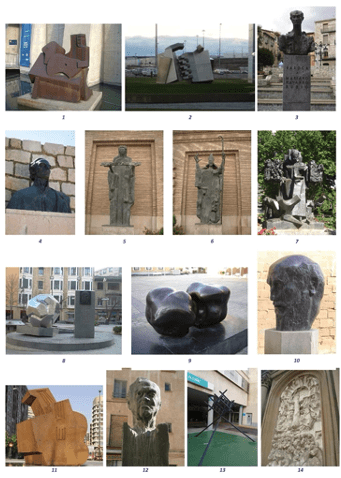
Solutions:
- Homage to Joaquín Rodrigo. Saragossa (entrance to the Pablo Serrano Museum)
- Figueruelas
- Mariano Navarro Rubio. Daroca
- José Gervasio Artigas. La Puebla de Albortón
- Ángel Custodio. Saragossa, door of the Town Hall
- San Valero. Saragossa, City Hall door
- Monument to the Teruel farm worker. Alcañiz
- José Sinués. Saragossa, behind the Teatro Principal
- Yunta unit. Ejea de los Caballeros
- Santiago Ramón y Cajal. Huesca, plaza de la Universidad
- Guitarra, 3. Saragossa, Plaza de la Ciudadanía.
- A Fleming. Alcañiz
- Burning of the object. Alcañiz (entrance to the Hospital)
- Coming of the Virgin. Saragossa, façade of the Basilica del Pilar.
Other Aragonese at the forefront
Two other Aragonese artists shared Pablo Serrano’s avant-garde concerns through the El Paso Group. Like the sculptor from Crivillén, both achieved high levels of popularity and international prestige that continued after their deaths.
Do some research on Antonio Saura and Manuel Viola. Complete these two paragraphs with the words that appear out of order.

Antonio Saura was born in …(1)… in 1930 and died in …(2)… in 1998. After an initial influence of …(3)…, he was attracted by other avant-garde movements such as European Informalism and American Abstract Expressionism. A follower of the works of …(4)…. and Goya, he was also …(5)…. of literary editions.
Manuel Viola was born in …(6)… in 1916 and died in San Lorenzo de El Escorial in …(7)….. Exiled in France after the …(8)…, he returned to Spain in 1949. His abstract …(9)…. shows an initial preoccupation with the …(10)… which gradually gives way to black and white.
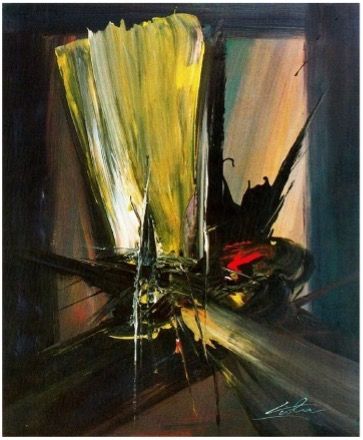
- (a) surrealism – (b) Saragossa – (c) expressionism – (d) Velázquez – (e) Huesca – (f) colour – (g) illustrator – (h) civil war – (i) Cuenca – (j) 1987
Solutions: 1-e, 2-i, 3-a, 4-d, 5-g, 6-b, 7-j, 8-h, 9-c, 10-f
Five series by Pablo Serrano
Pablo Serrano’s work reflects on light and space, but the aesthetic aspect is joined by his deep concern for the human being. He casts a profound gaze on them, seeking to endow them with a universal transcendence. In his sculptural series, the Aragonese artist seeks to put together a discourse, to give explanation and meaning to the yearnings and hopes for freedom.
He identifies each of these images with the series to which they belong.
1.

2.
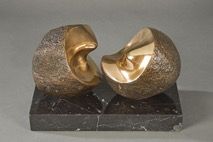
3.
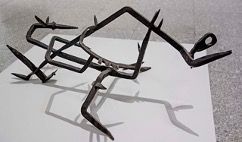
4.
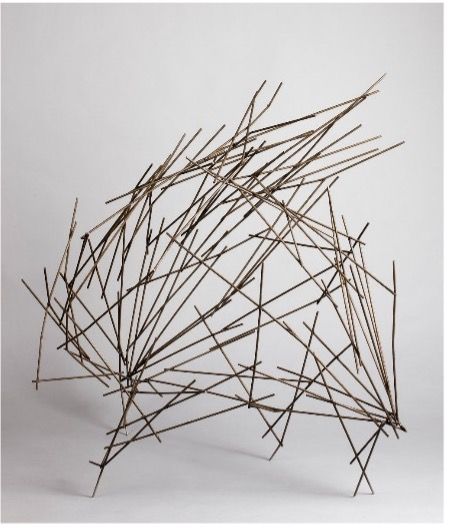
5.
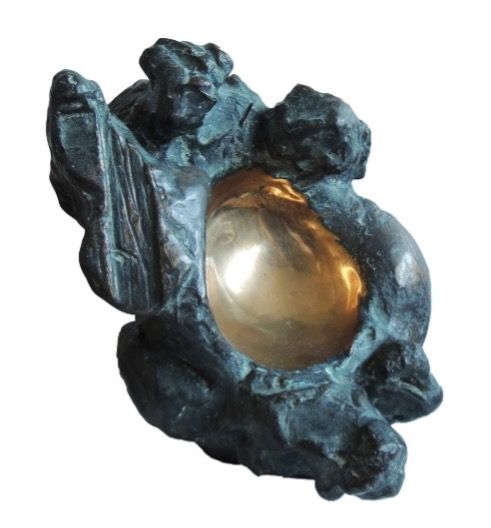
a) Bread b) Rhythms in space c) Fajaditos d) Vault-men e) Ordering chaos
Solutions: 1-c, 2-a, 3-e, 4-b, 5-d
The legacy of Pablo Serrano
The artist’s work lives on as a legacy that is projected into the future. Since the death of Pablo Serrano, his work has continued to be shown in exhibitions in Strasbourg, Rome, Buenos Aires, Brasilia, Santiago de Chile, Rabat, Valencia, Madrid, Barcelona… The Museum of Modern Art (MoMA) and the Guggenheim in New York, the Hermitage in St. Petersburg, the Georges Pompidou Centre and the Museum of Contemporary Art in Paris, the Gulbenkian Foundation in Lisbon, the Middelheim Museum in Antwerp, the Gaudifond Arte collection (Barcelona), the Vatican Museums in Rome, the Reina Sofía in Madrid, all have works by Serrano. ..
But the most important is in Aragon. The heirs confirmed the artist’s donation to the Government of Aragon, which created the Pablo Serrano Museum collection with this collection. With the passage of time, and after a series of projects… in 2011 the Pablo Serrano Aragonese Institute of Contemporary Art and Culture was inaugurated in Saragossa in the former factory and workshops of the Hospice of Saragossa.
As well as containing permanent exhibitions of works by Pablo Serrano and Juana Francés, it also hosts various temporary exhibitions and other cultural activities. The aim is to fulfil Serrano’s vision of the museum as a place from which to “bring the works closer to the people and encourage artistic creation”.
It is possible to schedule a visit and, from there…. Perhaps in the classroom, perhaps as a family… there are many options.
Illustrious, enlightened and enlightened Aragonese people
Download from this link the PDF of the publication Illustrious, enlightened and enlightened Aragonese people, by Antón Castro and José Luis Cano, published by the Government of Aragón in 1993.

DIRECCIÓN GENERAL DE POLÍTICA LINGÜÍSTICA
Departamento de Educación, Cultura y Deporte
Parque Empresarial Dinamiza (Recinto Expo)
Avenida de Ranillas, 5D - 2ª planta
50018 Zaragoza
Tfno: 976 71 54 65
Colabora:


